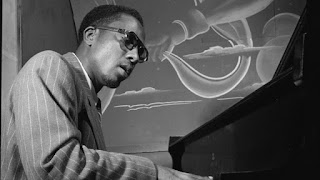The birth of Bebop Jazz happened for the same reason that any shift in music occurs – musicians and listeners were understandably ready for a change. After the hyper-commercialization of jazz during the swing era, musicians began rebelling against the overplayed norms; playing faster tempos and experimenting with chord progressions that encouraged listening rather than dancing. Musicians in Harem planted the bebop seed by bouncing ideas off each other after hours in clubs like the legendary Minton’s Playhouse. These brainstorming sessions led to even more focus on the improvisational aspects of jazz, making the solo a particularly special treat to the open-minded listener. Musicians seemingly flew through various scales and melodies only loosely based on the original theme, giving the music a heightened artistic edge that engaged the listener intellectually, and carried them on a journey to the previously unknown.
No one exemplifies this more naturally than Charlie “Bird” Parker, the first in the holy trinity of bebop innovators that includes Dizzy Gillespie and Thelonious Monk. Parker was a troubled soul who battled drug and alcohol addiction until his early death at the age of 34. And like many conflicted artists, his music transcended the status quo. This artistry is wonderfully clear on the track, “Embraceable You,” which he recorded with a young Miles Davis and Max Roach. Parker cleverly contradicts the slow, ballad-like feel of the song by immediately launching into flurry of improvised melodies, notes and phrases punctuated by much faster tempos. The effect is mesmerizing, which may have been Parker’s intent. He had just been released from rehab at the time of the recording, and perhaps the music provided a therapeutic release for his inner conflict. Alas, drug use had become a common problem for jazz musicians by the 1940s, and Parker’s struggle marked the rise of a sad chapter in jazz, when many of its stars would succumb to this abusive path.
Of the three stars in bebop’s trinity, the most eclectic was Monk, whose abrasive, dissonant and non-traditional approach to playing piano asserted individuality – a concept that was beginning to flourish in America during this time. People had begun equating individualism with freedom, and Monk celebrated this sentiment with his incredibly unique style of playing. His percussive, hesitant way stroking the keys broke through the traditional structures associated with the instrument and forced listeners to rethink what music, or art itself, could mean. One need only look to Kerouac and the newly emerging beat writers of the time. They too were motivated by breaking tradition, and it must have been astonishing to witness someone master this quest as effortlessly and confidentially as Monk did. The beat writers adopted this freeing approach to creativity, which allowed their thoughts and words to flow without restraint in a way that was pleasantly reminiscent of a bebop jazz solo. In fact, the emergence of an entirely new and exciting form of literature inspired by music exhibits just how powerful the art of Jazz truly is – especially once its masters began contemplating the music at a deeper level.
